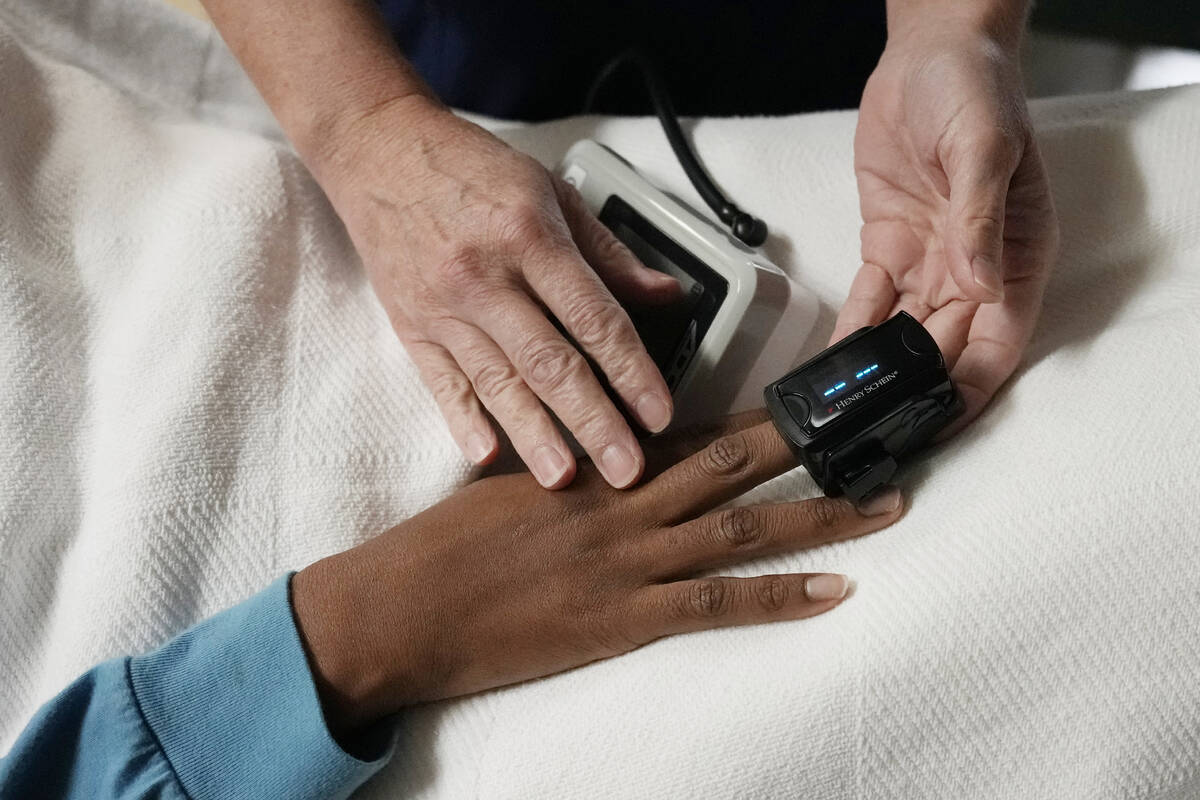Patients of color more often brace for unfair treatment, survey finds
A trip to the doctor’s office comes with a bit of preparation for most, maybe even an internal pep talk to prepare for being told to get more exercise or calm a simmering fear of needles.
But dressing well in hopes of warding off unfair treatment — or even bracing for being insulted?
A newly released poll by KFF, a health policy research group, found many patients of color — including 3 in 5 Black respondents — take such steps at least some of the time when seeing a doctor.
The poll found that 55 percent of Black respondents said they feel like they must be very careful about their appearance to be treated fairly at medical visits. That’s similar to the rate for Hispanic and Alaska Native patients — and nearly double the rate for white patients.
Nearly 30 percent of Black respondents prepare to be insulted, also about double the rate for white patients.
“It’s exhausting,” survey respondent Christine Wright, 60, told The Associated Press.
Wright, who is Black, says she’s faced years of discrimination — including once being called a racial slur by a nurse. She was diagnosed with breast cancer in 2017 and recently found a doctor she trusts. But she still makes sure to dress well for any medical appointments, putting on jewelry, a nice coat and making sure her hair is done.
She braces herself for looks and comments from doctors and staff. “They don’t control you,” she tells herself. “They don’t. Doesn’t matter what they’re saying about you. Because you’re not that.”
Deeper problem
While more than 90 percent of those polled said they were not treated unfairly or with disrespect in a health care setting because of their race or ethnic background in the past three years, the anticipation of unequal treatment can influence patients’ interactions with their doctors, experts say. That’s a particular concern because of the wide disparities in health outcomes along racial lines in the United States.
“This survey shows the impact racism and discrimination continues to have on people’s health care experiences,” KFF President Drew Altman said.
Dr. Allison Bryant, an obstetrician at Massachusetts General Hospital who was not involved in the survey, said it provided important — though not necessarily surprising — results.
Bryant, who also serves as her hospital system’s associate chief health equity officer, said she has heard similar stories from patients of color and seen it in the system’s own patient satisfaction data. And as a Black woman, she lives the experience herself, often double-checking she has her ID or wedding ring visible to ward off assumptions from others.
“I think everybody experiences that to some extent,” Bryant said. “But I understand why it’s more exaggerated in individuals of color, who have a legacy of not being treated well.”
The behavior indicates a deeper problem, Bryant said, one that can influence critical interactions between a doctor and patient.
If you anticipate someone may treat you badly you may be more tense, you may not speak properly, she said. “There are deep harms that are associated with this that go beyond what it might look like at the surface, which is like, ‘I put on some high heels and I put on some lipstick.’ ”
‘You’re treated how you look’
Jeymie Luna Roldán, 45, also participated in the survey. She thinks her previous lack of health insurance or her imperfect English contributed to her bad experiences at the doctor’s office. She spoke to the AP in Spanish.
“In my case, I’m Latina,” said Roldán, of Lake Worth, Florida. “So, when I have an appointment, I have to dress up a little — put on earrings, makeup — so that they don’t see me in my work clothes. There’s a saying that goes, ‘Como te miro, te trato.’ ”
That translates to: “You’re treated how you look.”
Despite high percentages of people saying they prepare for insults or feel their appearance can influence how they are treated at the doctor, 93 percent said they have not felt they were treated unfairly or with disrespect in a health care setting because of their race or ethnic background in the past three years.
But there were still wide differences among racial groups. Asians and Hispanics were three times more likely to say they have been treated badly in a health care setting because of their race than white respondents, and Black respondents were six times more likely.
Beyond the doctor’s office, 58 percent of American Indians and Alaska Natives, 54 percent of Black respondents, 50 percent of Hispanics and 42 percent of Asians said they experienced at least one type of discrimination in daily life at least a few times in the past year. That includes getting poorer service at stores and restaurants, being threatened, harassed or treated like they are not smart, or being criticized for speaking a language other than English.
While this shows health care is just one of the settings where discrimination is persistent, Bryant said, being treated with disrespect at a car dealership or profiled at a department store poses a different type of risk. A dismissive cardiologist not ordering the right tests because a patient doesn’t “look the part” is potentially more dangerous.
“The consequences in health care are really striking and very frightening, honestly, to understand what people need to do to be taken seriously, to be seen as a whole person,” she said. “I think these data really speak to that.”



















